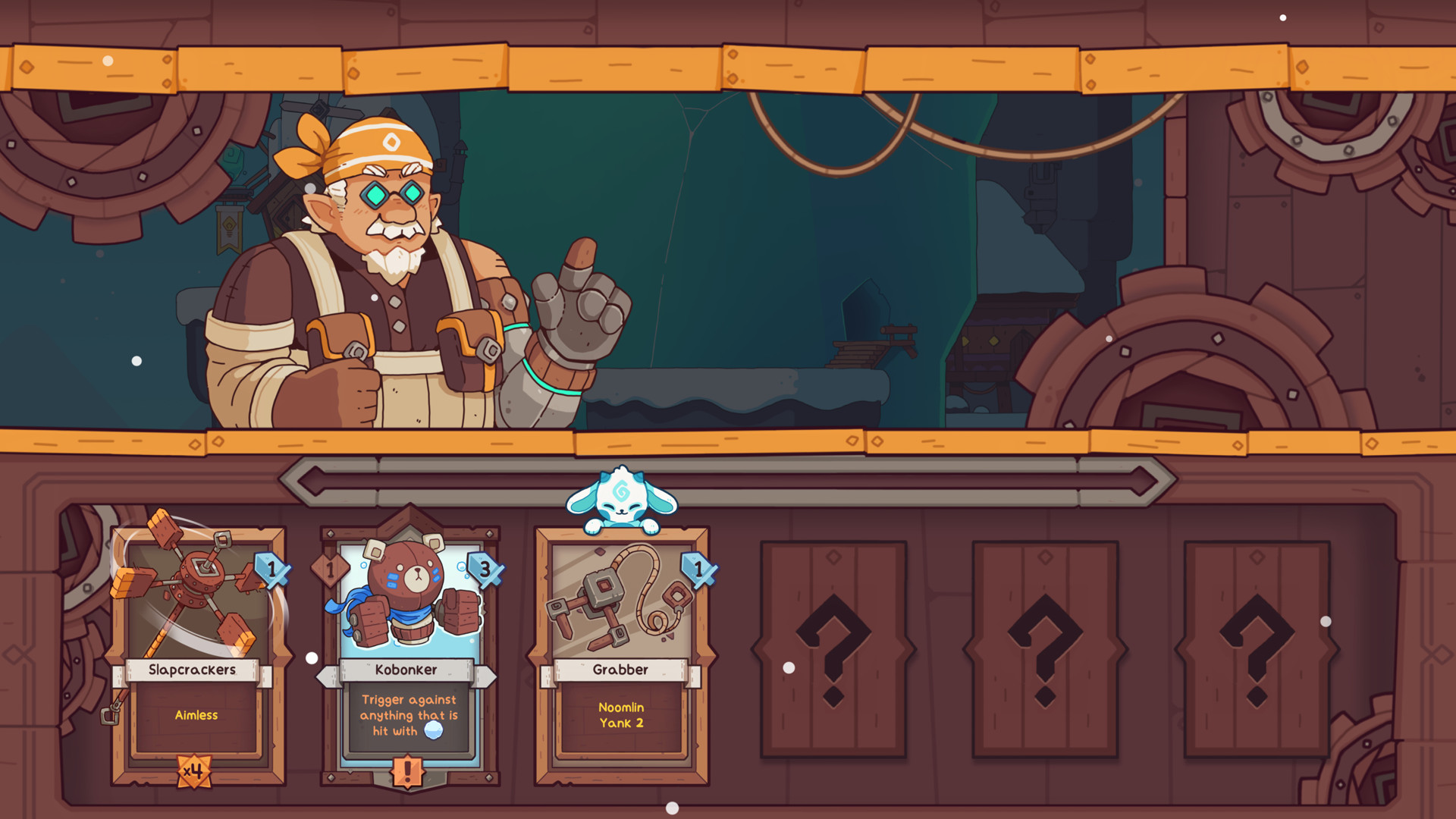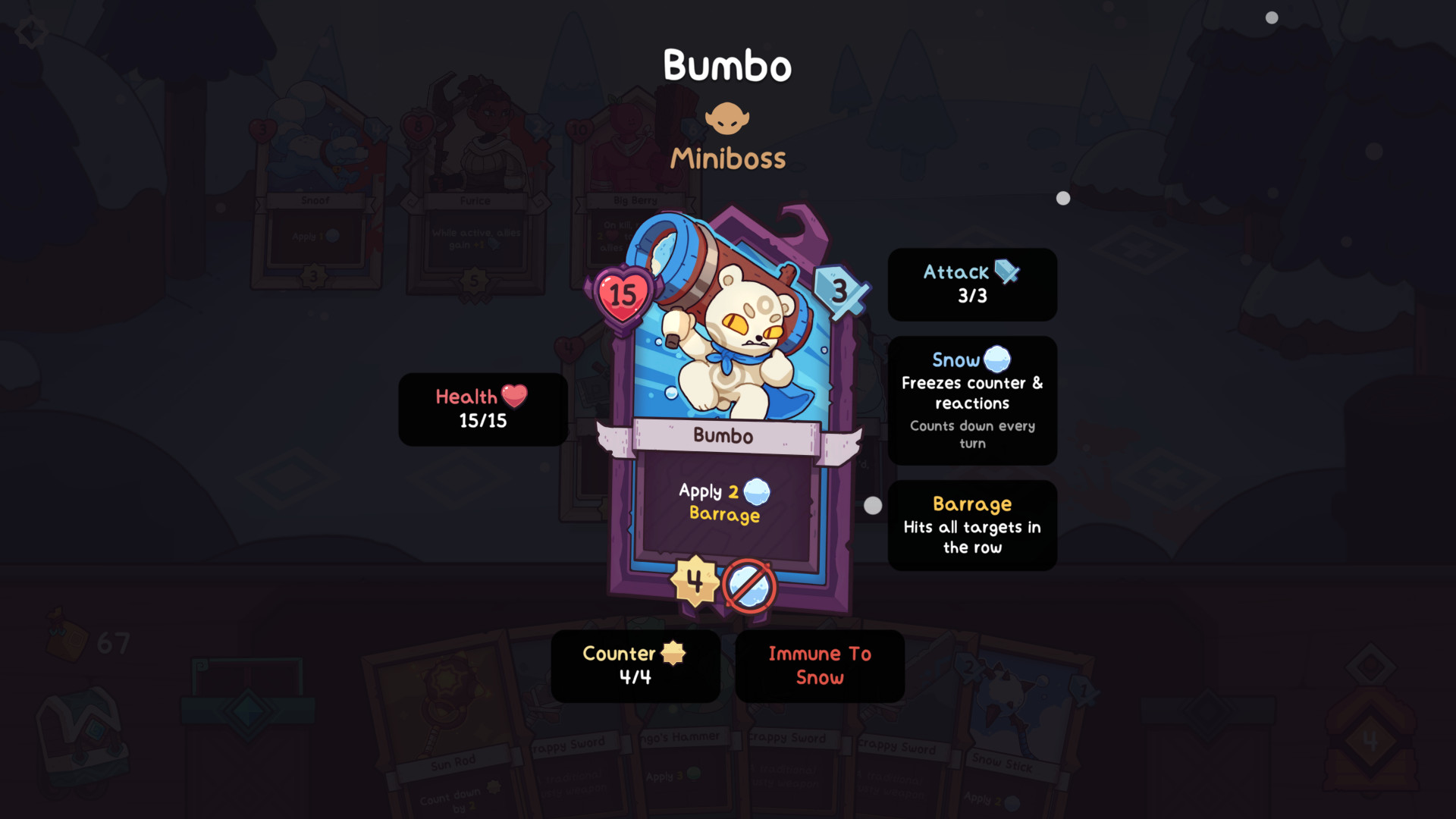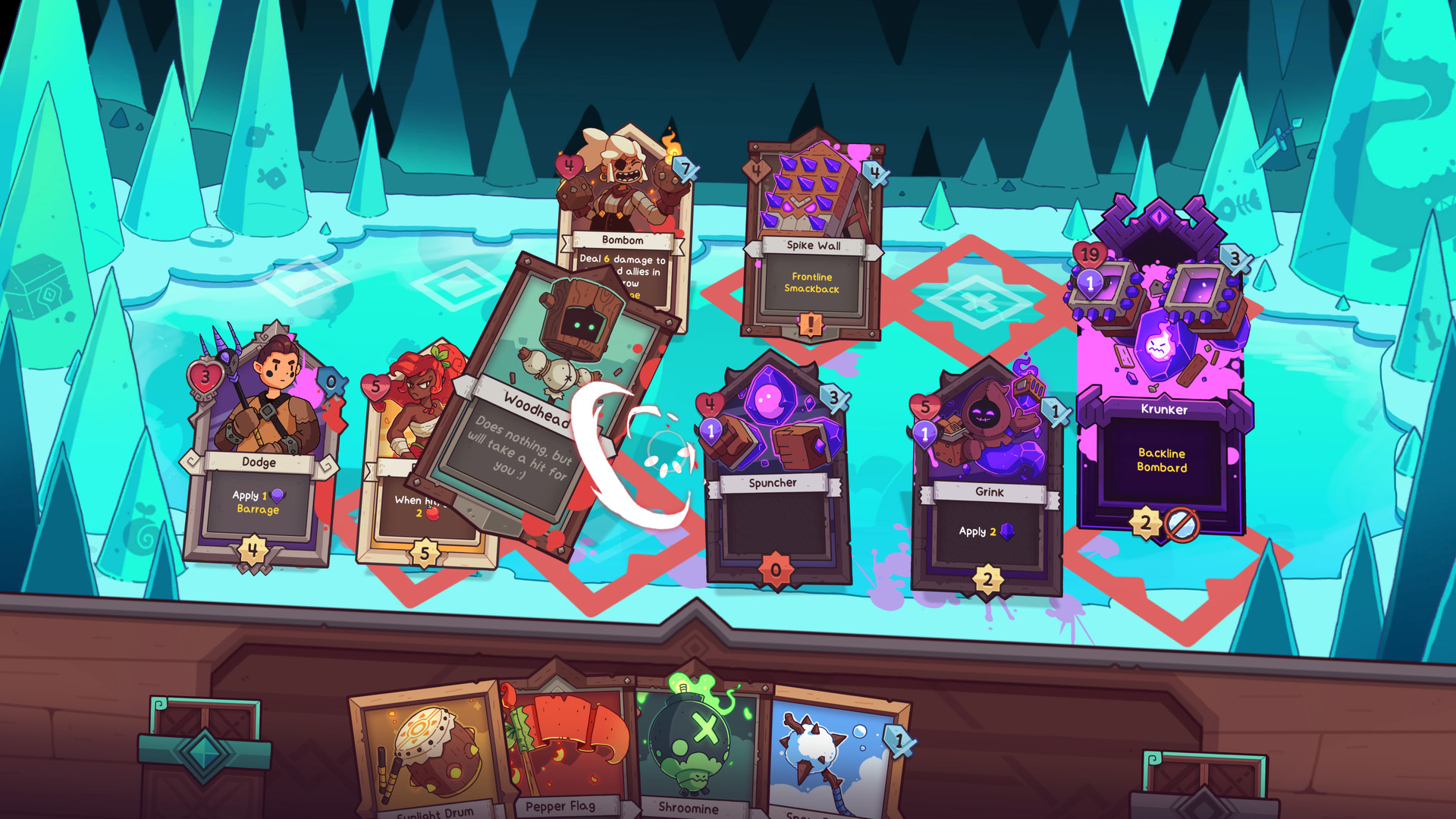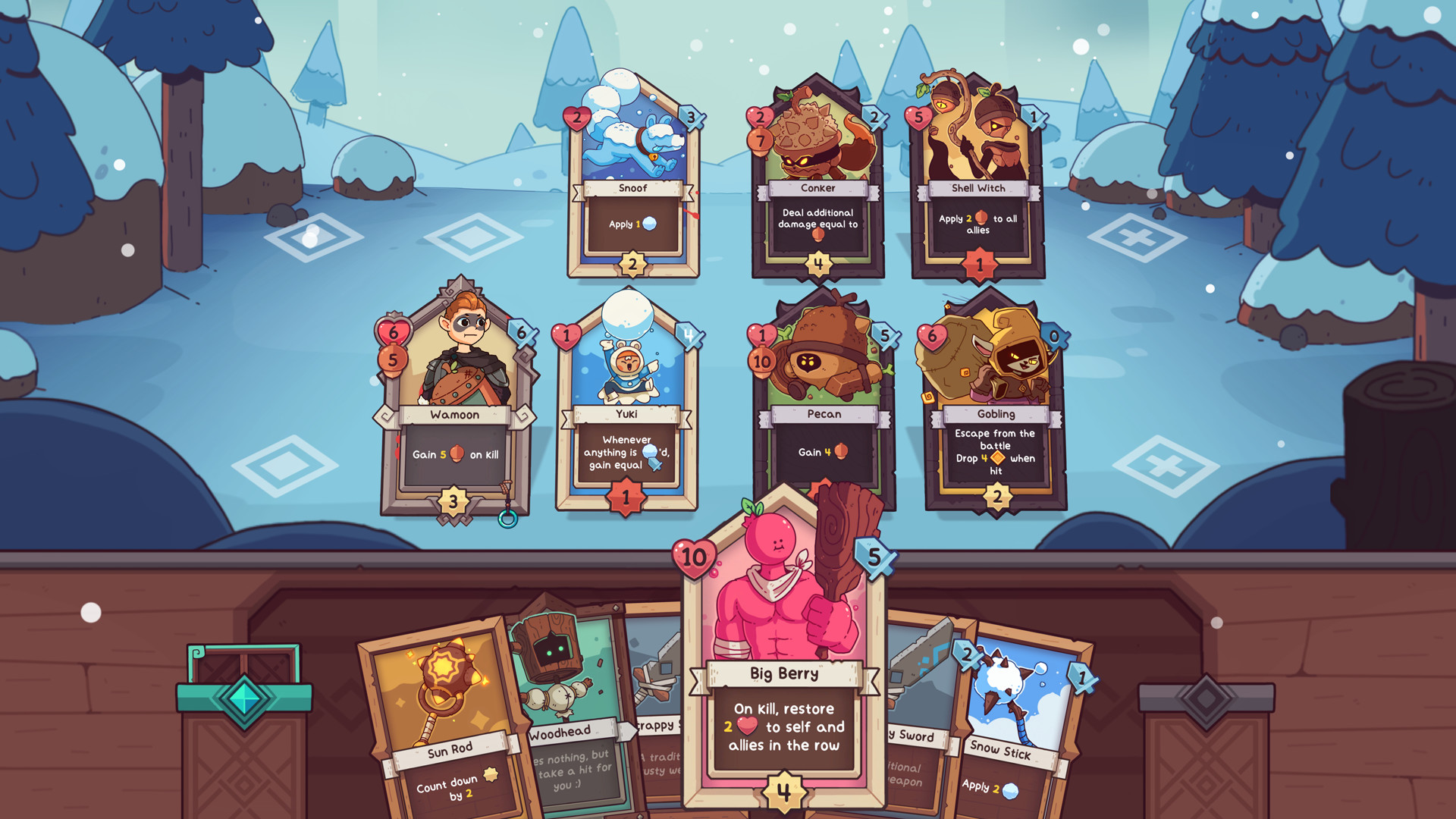Wildfrost is a fast-paced and deceptively cute take on Monster Train
Wildfrost plays like a hectic tactics game wrapped in a card game

Wildfrost looked a heck of a lot like Slay the Spire when publisher Chucklefish unveiled it at a Nintendo Indie showcase earlier this year, and it's been in the back of my mind ever since. Now that I've finally gotten my hands on it – as co-developers Deadpan Games and Gaziter host a demo alongside Steam Next Fest – I see that it's actually a heck of a lot like Monster Train, which is itself a lot like Slay the Spire. To my delight, the rogue-like deck-builder genome continues to mutate, and Wildfrost is another immediately engrossing riff on the ever-evolving genre. My demo build only covered the tip of the iceberg, but Wildfrost has already proven itself a cute, charming, and utterly coldhearted card battler. Buckle up folks, because there are more frost puns where those came from. Apologies in advance.
The Monster Train ancestry starts to pop out almost immediately after Wildfrost begins. Once again, we're going on a long journey hoping to set something on fire, only this time we're reviving the sun to stave off eternal winter instead of reigniting Hell itself. Also like Monster Train, Wildfrost splits combat into lanes of units where the frontliner takes all the hits (unless something modifies attack targets, and a lot of stuff does). Long-time deck-builder fans will notice some other familiar keywords and mechanics, but Wildfrost uses these ideas as a primer to build a dynamic game of strategy that stands out from its peers.
This is still technically a card game

The biggest difference is Wildfrost's alternative to mana, which is the go-to resource for most card games. Instead of a mana cost, cards are free to cast but most come with counters, and this system shapes the entire game. When you play a card, every unit on the board – friendly and enemy – will update, with standard actions removing one counter from everyone. Some cards may remove additional counters from your units or add extra counters to enemy units, hastening or delaying actions as needed. When a unit hits zero counters, it will attack and/or trigger some other action. So a minion with two attack and three base counters will deal two damage every three actions. The kicker is that enemies will always attack first even if they reach zero counters at the same time as one of your units, though you can cheat this rule by removing extra counters from your side.
Instead of clearly divided turns where you do your stuff and then the enemy does their stuff, this creates a fast-paced back-and-forth where your units and enemy units are constantly progressing toward interlaced actions. This makes Wildfrost feel a bit less like a traditional card game and more like a tactics game, but it's still driven by card mechanics. You draft new spells and units as you progress through the branching, procedurally generated map of each run, choosing between merchants, treasure, extra units, and other pit-stops along the way. Units have standard health and attack values as well as additional effects with added utility (wintry takes on Poison and Block from Slay the Spire, for example, or Multistrike and Sweep from Monster Train). You can refill your hand with a magic bell, but you only get a free redraw every few turns and drawing early will burn precious actions.

All that being said, I think the most intriguing part of Wildfrost is how adaptive it is. The goal of each battle is to keep your leader unit alive and take out the enemy leader – usually a mini-boss with special mechanics. To that end, you can move your leader around the board – two lanes with three slots each – without spending actions, and you can do this with all of your units before most every action. Leaders are tankier than standard units, so you might want to put them up front to absorb a few hits. But if a heavy attack is coming in, you might place a disposable artifact in front of your leader to soak up the damage. I always beat Monster Train by building unstoppable combos of units that usually never moved, but Wildfrost is explicitly about tweaking things to suit the current game state, and it's about as exhilarating as dragging virtual cards around can be.
On top of rearranging units on the board, you can also put damaged (non-leader) units back into your deck so that you can draw into them again, fully healed, and replay them. Otherwise, you'll have to heal them up with other cards or carefully rotate your lineup so that there's always someone healthy up front. In my experience, it's usually a good idea to draft a few high-health cards to hold down the fort. Because if a non-leader unit does die in a round, they'll become injured and their stats will be halved until you restore them to full power by winning another round without losing them.

It's a lot to take in, and I haven't even gotten to the light town-building going on in the background which steadily unlocks new options for each run. Playing Wildfrost almost feels like working in a restaurant kitchen. Orders are constantly coming in and you've got a zillion things to balance. Flip that over, freeze that, take this off the heat, time these two things just right so they're ready to go out simultaneously. It's dangerously easy to overlook a critical action and sack a key unit, even when the game technically tells you the outcome of every move you make (which, as ever, just makes me feel even stupider). And as cute as it is, Wildfrost will absolutely gut you for a single misplay. I did manage to clear the demo build, but only after a few failed runs and only by the skin of my teeth. Needless to say, I can't wait to unlock more cards and play through the full game.
Sign up to the GamesRadar+ Newsletter
Weekly digests, tales from the communities you love, and more
Fittingly enough, Wildfrost is out this winter on PC and Switch.

Austin has been a game journalist for 12 years, having freelanced for the likes of PC Gamer, Eurogamer, IGN, Sports Illustrated, and more while finishing his journalism degree. He's been with GamesRadar+ since 2019. They've yet to realize his position is a cover for his career-spanning Destiny column, and he's kept the ruse going with a lot of news and the occasional feature, all while playing as many roguelikes as possible.


